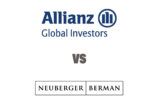My-Linh Ngo, Bluebay AM
The approach to environmental, social and corporate governance (ESG) screening differs between equity funds and bond funds.
ESG screens for equity funds are more influenced by external factors. “Equity prices are more influenced by sentiment and concern about future earnings,” Ngo told FSA. ESG analysis for a fixed income fund has a stronger focus on capital preservation and risk mitigation and is related to the company’s creditworthiness and its financial ability to manage a potential liability.
But high yield bonds present additional challenges for analysts and fund managers.
To conduct ESG analysis, the team uses both third-party input from providers, such as MSCI and Sustainalytics, and their own ESG scorecards.
When assessing high yield, the third-party data is of limited use, according to Ngo.
“The external providers have an equity bias to the investment methodology,” she said. “They are only just starting to cover the fixed income universe in a more meaningful way.” She added that the coverage third parties provide is at the moment focused on the investment grade universe, leaving large gaps in the high yield space.
Partly by necessity, therefore, and partly by design, the analysts have to develop their own view on the ESG issues of a company. “It is important for our analysts to have ownership of the ESG process,” Ngo said.
Conventional vs ESG
The Bluebay Global High Yield ESG Bond Fund was launched in February 2017, as an ESG version of the firm’s flagship Global High Yield Bond Fund, launched in 2010. The firm created the ESG fund in response to demand from a Scandinavian institutional investor.
“[They] wanted to run a global high yield fund with a more explicit ESG focus in compliance with the Norwegian government’s bond fund guidelines and restrictions,” Marc Kemp, institutional portfolio manager at Bluebay, told FSA.
The fund currently has $125m in assets, according to Kemp, most of it from institutional investors. A retail share class is registered for distribution in Singapore and available to professional investors on in Hong Kong.

Marc Kemp, institutional portfolio manager, Bluebay AM
Both the ESG fund and its conventional version are managed by the same team consisting of two co-managers: Thomas Kreuzer and Justin Jewell. While they follow slightly different benchmarks, they are managed using the same bottom-up approach, based on the input of the same team of analysts.
The conventional fund is benchmarked against the Bank of America (BoA) Merrill Lynch Global High Yield Index, while the benchmark of the ESG fund is the BoA Merrill Lynch Global High Yield Investment Grade Countries Index.
The choice of a different benchmark has nothing to do with ESG considerations, according to Kemp, but is a more fair reflection of the fund’s lower exposure to emerging markets compared to that in the Global High Yield Index.
The main difference between the conventional fund and the ESG fund lies in considerations of ESG factors beyond their impact on investment risk.
“When we take into account ESG factors, we evaluate to what extent they have an investment risk impact,” said Ngo. “In our conventional fund, if we deem that the factor does not have an investment risk impact, we can still invest in the company.” The same factor might result in the exclusion of a company from the ESG fund universe, even though it doesn’t have a direct investment impact.
As a rule, companies producing cluster munitions and land mines are excluded from the investable universe for all Bluebay funds. In addition, the ESG fund would also exclude producers of other weapons (chemical, biological, nuclear, depleted uranium) as well as producers of tobacco and those for whom revenue from coal represents more than 30% of total revenue. Additional screening is used for the ESG fund to eliminate companies based on their business conduct and management practices.
Moreover, the fund managers can exclude companies whose practices they deem “not socially acceptable from the responsibility point of view, regardless of whether they have a credit impact”, Ngo said.
As a result, the differences between the two funds can be seen both in sector allocation and in individual names, according to Ngo. As more companies are excluded from the investable universe of the ESG fund than the conventional fund, the former tends to hold fewer names, around 120, compared to the latter one’s 140.
It is still early days for the ESG fund, incepted in February 2017. But a look at the line chart shows it has so far underperformed its benchmark, peer sector and the firm’s conventional fund in US dollar terms, according to FE data.
The primary focus of both funds is on eliminating risks, according to Kemp. This means that the funds are designed to outperform during periods of market stress, “but would underperform during periods of aggressive, indiscriminate market beta rally”, he said.
Bluebay Global High Yield Fund vs ESG version


















